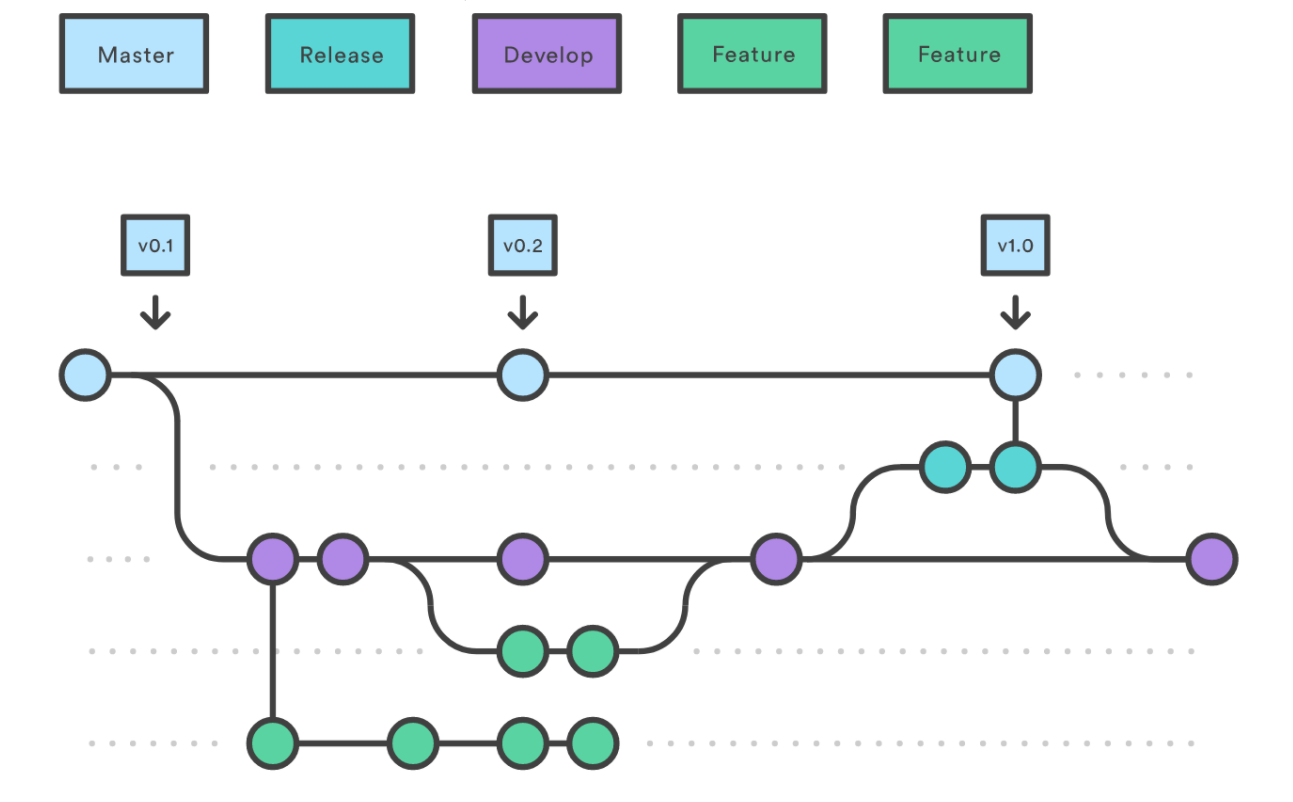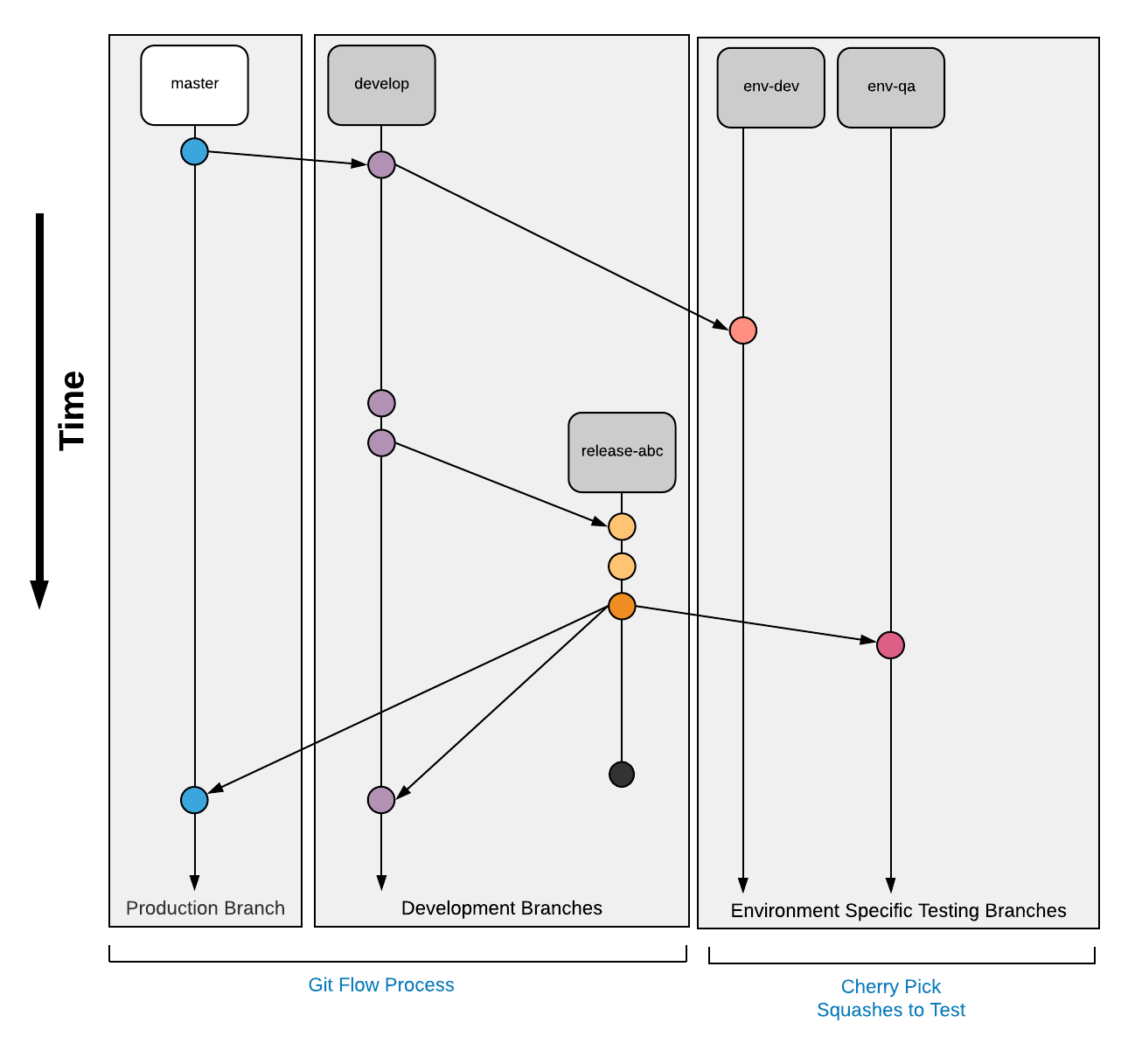Code Repository & DevOps Workflow
The main goal of the development/DevOps workflow is to enable simple parallel development, testing and release of features and fixes by multiple teams. Organizations that use Git for source code management support this objective through a standardized Git branching and workflow strategy known as GitFlow. In the following section we’ll break this standard branching strategy down into two parts: Feature Development and Release.
Feature Development
Consider the following diagram below. This is the essence of the GitFlow strategy: There are 3 “types” (read purpose) of branches shown in the diagram: Master, Develop and Feature.

Master: There is one Master branch. The master branch maps to the history of what is “In Production.” The Master branch is long-lived, it lives forever.
Develop: There is one Develop branch. Development contains completed, individual features headed for production. The Develop branch is long-lived, it lives forever.
Feature: There are as many feature branches as needed to support a specific team / isolated unit of work. A Feature branch is short-lived, it lives only as long as the feature/team exists.
The above workflow is a simplified version of the ultimate workflow but it illustrates the ability to achieve parallel feature development across an unlimited number of teams.
Nothing gets to Master until it has passed through the Develop branch and is vetted.
Develop branch contains vetted code that is accessible for Feature teams to pull in to their environments when appropriate to support CI/CD.
Work in one feature can never impact another feature until after it’s been vetted as official and is no longer “experimental” or in development.
Releases
When a group of feature is ready for release the typical practice is to “Code Freeze”, perform QA and then perform specific fixes, Let’s extend our workflow above to support a release:

Release: There can be multiple release branches. A release branch contains a snapshot of development that is being hardened through a the QA/bug fix cycle. The contents of a hardened release branch are what go production (and back to dev.) Release is a short-lived, it lives only for the duration of the hardening and release activity.
Testing Environments and Development Process
We’ll take a look at a development process, where there are two environments, each with a number of servers which are specific to a function in the architecture (authoring, delivery, business rules, etc.) The following environments are relevant:
Dev: Development and integration testing
QA: Quality Assurance environment
At various points in the development process a feature or a group of features (a release) need to go to a lower environment such as development or QA for testing. Because CrafterCMS uses a Git-based repository, environments can sit on top of specific branches, allowing you to easily look at a release.
The typical process for moving code through the environments can be summarized in the following way:
Throughout a features development it is put to a Dev environment (dev) for system integration testing.
Once things have passed the feature is moved to QA to be qualified and for final hardening for production.
After qualifying the code is moved to production.
From the above mentioned environments, we have the following long-lived branches:
env-dev: Development / System integration environment testing branch. This branch contains what is in development plus the contents of a specific feature branch.
env-qa: Production qualification environment testing branch. This branch contains a specific release for qualification.
Given these branches and the GitFlow mechanics we described prior, the following diagram is an illustration of the full development workflow.
